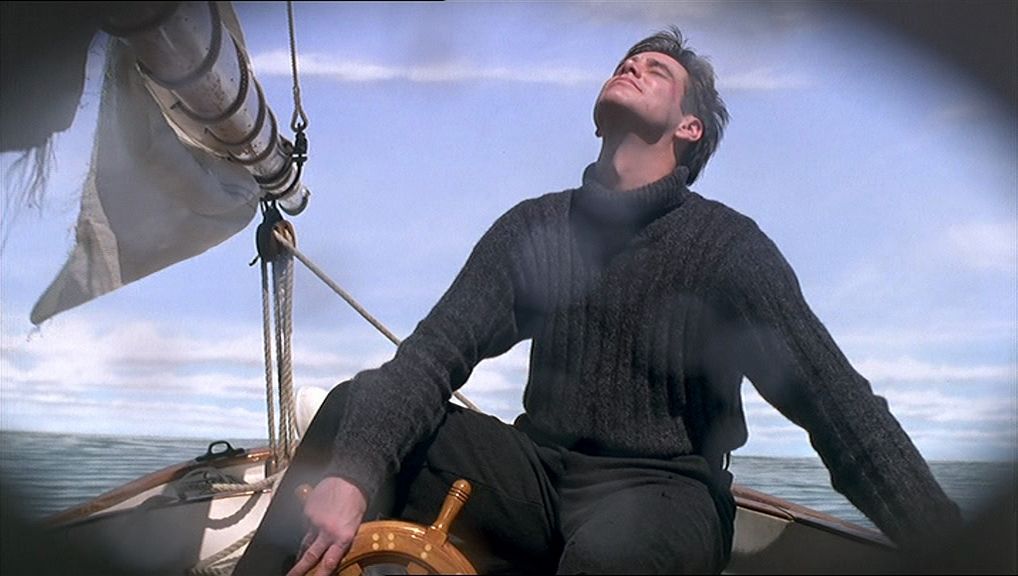“The Truman Show” is based around one singular idea. Aside from the solid acting, clever storytelling, and imaginative editing, it is the underlying concept that is truly the defining feature of the film. If you somehow have managed to avoid knowing what this is, I suggest you stop reading now and go watch it. Though I imagine the premise of “The Truman Show” is now widely known, being able to watch the film without knowing this could make for an interesting viewing experience.
As I was saying, the film is built around the notion that Truman Burbank (played excellently by Jim Carrey) has unknowingly lived his entire life inside of a television show. The story is fairly straightforward from there (Truman slowly becomes aware of his artificial world and seeks to escape), but it is the creation of Truman’s world that makes the film so interesting. The entire town that Truman lives in is one giant set and everyone he knows is playing a role. As Truman begins to become aware of his artificial world, the way that the creators of the show attempt to maintain their illusion is fascinating.
Though he is primarily a comedic actor, Jim Carrey seems to excel in more serious roles. While at times allowing his inherent wackiness to emerge, it is his ability to act as an everyman that makes him perfect for the role of Truman. As an audience, we feel his loneliness, his yearning for a life beyond the town of Seahaven, and the frustration that sits behind his mask of cheeriness.
One of the main triumphs of this film is its ability to convey subtext – the viewer knows that Truman’s world is fake and is thus able to notice all of the clever hints placed by director Peter Weir. When watching an interaction between a suspicious Truman and his wife Meryl (played by Laura Linney), it is the underlying emotions behind their fake smiles that make the scene entertaining (Truman’s suspicion and frustrating versus Meryl’s desperate attempts to convince Truman that the world he lives in is real). All of the actors do a fantastic job of allowing us glimpses of what is going on below the surface through subtle eye movements and body language.
However, if Truman’s fake world is entertaining in all of its careful construction, it is the reaction of the outside world to the Truman show that is truly thought provoking. Millions of viewers tune in to watch Truman living his daily life, more interested in watching someone else’s life than living their own. In Roger Ebert’s review of this movie, he raised questions about how television places celebrities in a fishbowl and the ethical implications of increasingly intrusive technology. Watching this movie in an era ruled by social media, it takes on an entirely different meaning. Truman’s ultimate choice between freedom/truth and safety/familiarity is all the more poignant in a world controlled by big data and fake news, while the final line of the movie (“Let’s see what else is on”) is fundamental to our time, critiquing our mindless consumption of entertainment.
Ultimately, “The Truman Show” is one of those rare films that will entertain you, while also forcing you to ponder some tough questions. Let’s hope that we can find the answers.
-by Kieran Davey
